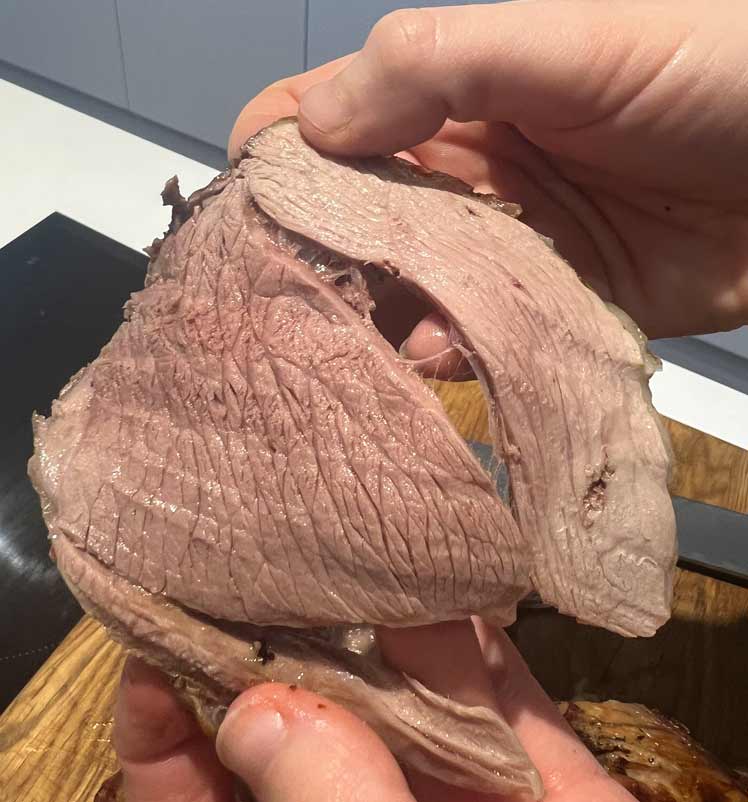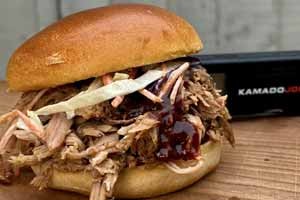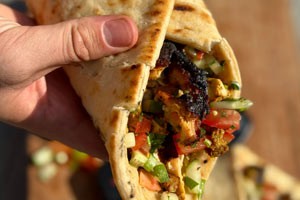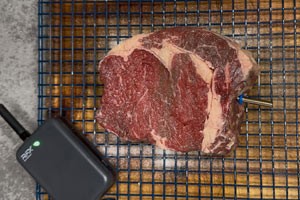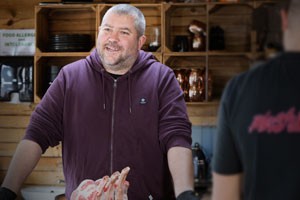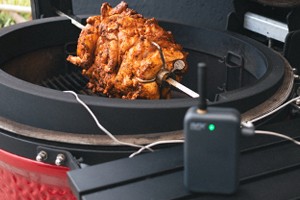Easy, tender BBQ pulled pork, loaded into buns with coleslaw and BBQ sauce.
The Science of Resting Lamb
When meat is removed from the oven, it continues to rise in temperature for some time afterwards. This is called carryover cooking. With red meat like lamb, this impacts whether you get the rare, medium or well-done result you’re looking for.
We cooked four lamb legs in slightly different ways to find out how much the temperature of lamb leg increases as it rests. Plus, which factors can impact this temperature increase. The aim was to provide a result which helps home cooks know how early to remove a lamb leg from the oven.
The Experiment
How we cooked the lamb legs:
Lamb 1
- 2.3kg whole leg of lamb
- Cooked to 51 °C
- Rested tented with foil
Lamb 2
- 2.3kg whole leg of lamb
- Cooked to 60 °C
- Rested tented with foil
Lamb 3
- 2.3kg whole leg of lamb
- Cooked to 51 °C
- Rested without foil
Lamb 3
- 1kg half leg of lamb
- Cooked to 51 °C
- Rested tented with foil
We hoped to learn three
things from this:
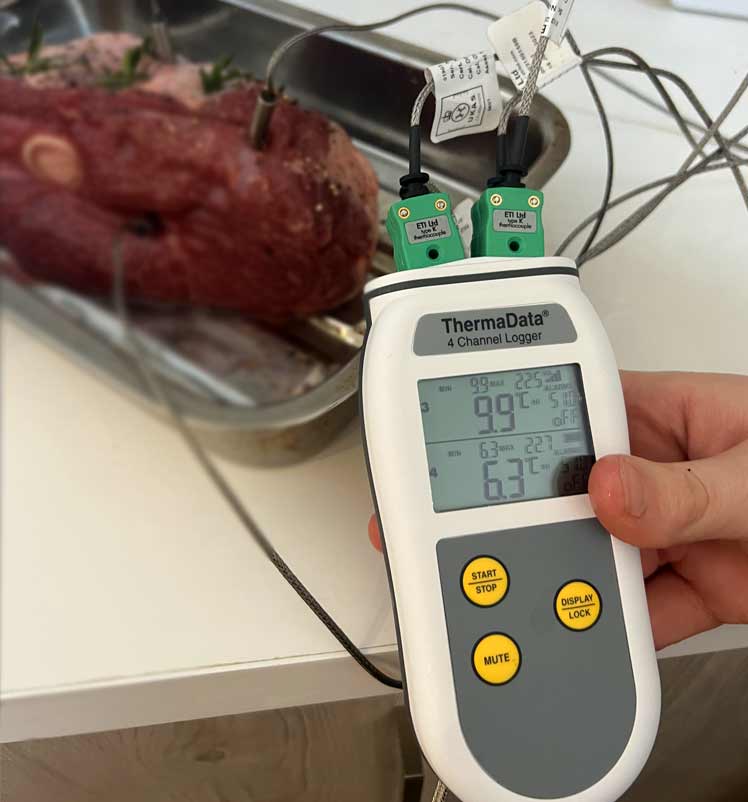
Cooked temperature
Whether cooking lamb legs to a higher internal temperature makes it rise more or less as it rests.
We looked at this by comparing lamb 1 with lamb 2.
Meat size/weight
Whether the weight of the lamb leg makes the temperature rise more or less during the rest. We looked at this by comparing lamb 1 with lamb 3.
Resting method
Whether covering the meat with foil during the rest makes the temperature rise more or less as it rests. We looked at this by comparing lamb 1 with lamb 4.
How We Controlled the Test
Weight
For the three whole legs of lamb, we purchased ones of similar weights.
Oven temperature
We monitored the oven temperature as the lambs cooked to maintain it at 200 °C (fan setting).
Meat temperature
We monitored the internal temperature of each lamb using a data logger thermometer with three probes placed in the thickest parts of the meat. We removed the meat from the oven when the readings from each probe averaged the temperature we wanted.
Cooked temperature
We cooked the lambs to 5 °C under their recommended temperatures in anticipation that this is how much they would rise during the rest. The temperature for medium rare lamb is 56 °C, so we removed the three medium rare lambs from the oven at 51 °C. The temperature for medium well lamb is 65 °C, so we removed this one from the oven at 60 °C.
Resting
When we removed the lambs from the oven, we transferred them straight to a plate to rest and continued monitoring them with the data logger.
Room temperature
We monitored the room temperature in the kitchen where the lambs were resting — it stayed at between 21 and 22 °C throughout.
The Results
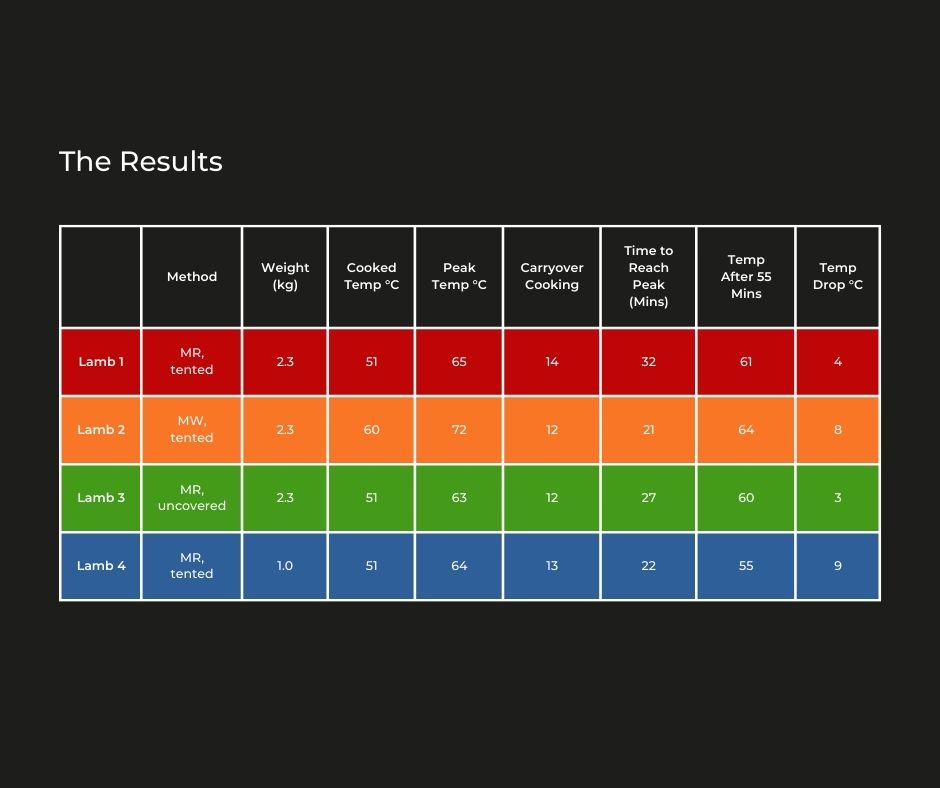
*Calculated average using the data from all three probes measuring the meat.
Cooked temperature
The whole medium rare leg (tented) carryover cooked by 2 °C more than the whole medium well leg (tented). So, cooking to a higher temperature meant the temperature didn’t rise as much afterwards.
Meat size/weight
The medium rare half leg of lamb (tented) carryover cooked by 1 °C less than the medium rare whole leg (tented). So, cooking a smaller joint of lamb does make it carryover cook slightly less.
The half leg also reached its peak temperature 10 minutes quicker, and it dropped by 4 °C more after 55 minutes. This shows that cooks should rest smaller joints for less time.
Resting method
The whole medium rare leg of lamb (uncovered) carryover cooked by 2 °C less than the tented leg. So, tenting with foil during the rest does make lamb increase slightly more in temperature.
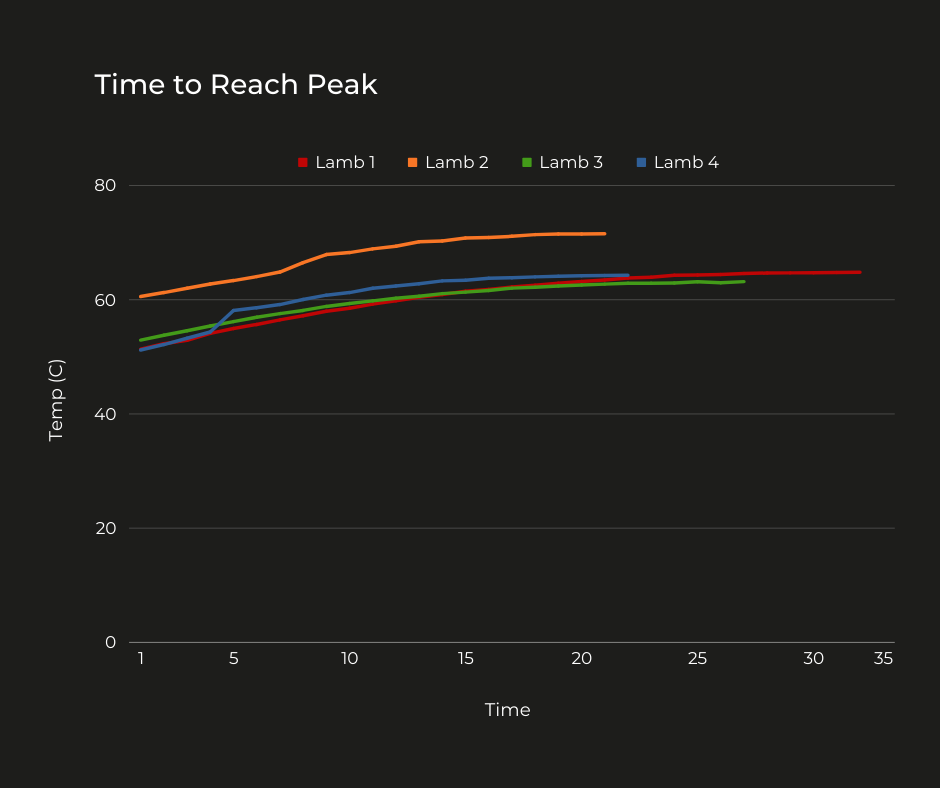
Additional Test — Instructions
vs Science
After gathering the results from the four lambs, we decided to do one more comparison. We cooked one whole leg of lamb to the instructions on the packet and rested it using the most common guidelines we could find online. This was to compare the types of results home cooks would get from cooking and resting lamb using times rather than internal temperature as a guide.
The cook
There were only instructions for medium or well done lambs on the packet, so we went for medium. The instructions said it should cook for 96 minutes. When we removed it from the oven, its average internal temperature across the three probes was 77 °C — this is 17 °C over the temperature for medium lamb and 6 °C over the temperature for well done lamb.
The rest
We rested the lamb tented in foil for 20 minutes before carving. It only increased by 3 °C during this time, compared to the 13 °C average that the first four lambs cooked to. This confirmed that the higher the internal temperature meat is cooked to, the less it carryover cooks.
The result
At this point, the lamb was difficult to carve because it was still averaging 75 °C throughout. It looked very juicy as we cut into it. However, this is because the lamb had not cooled enough for the juices to thicken. This meant that instead of those juices being retained in the meat for a more delicious result, they sat, wasted, on our chopping board.
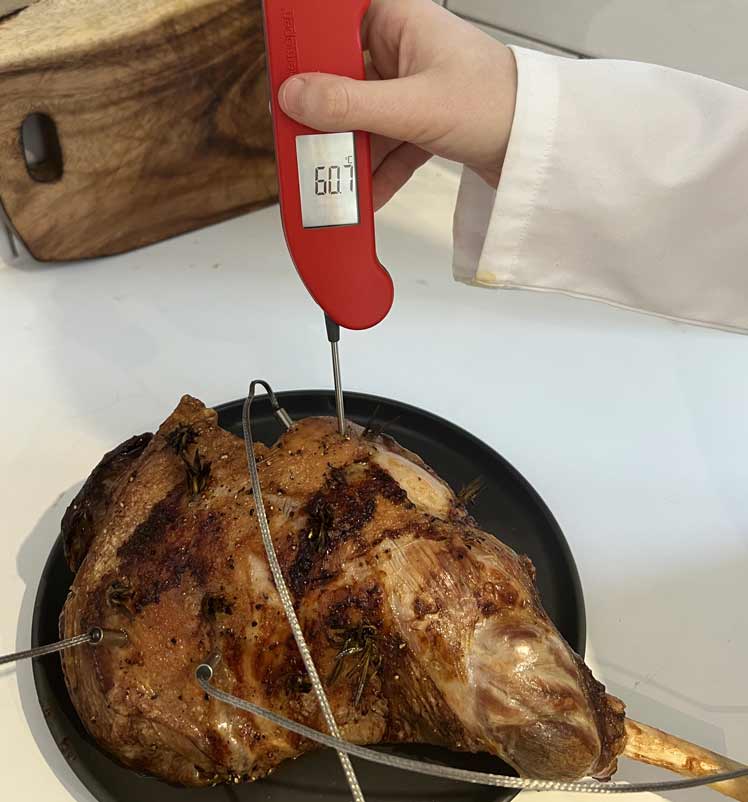
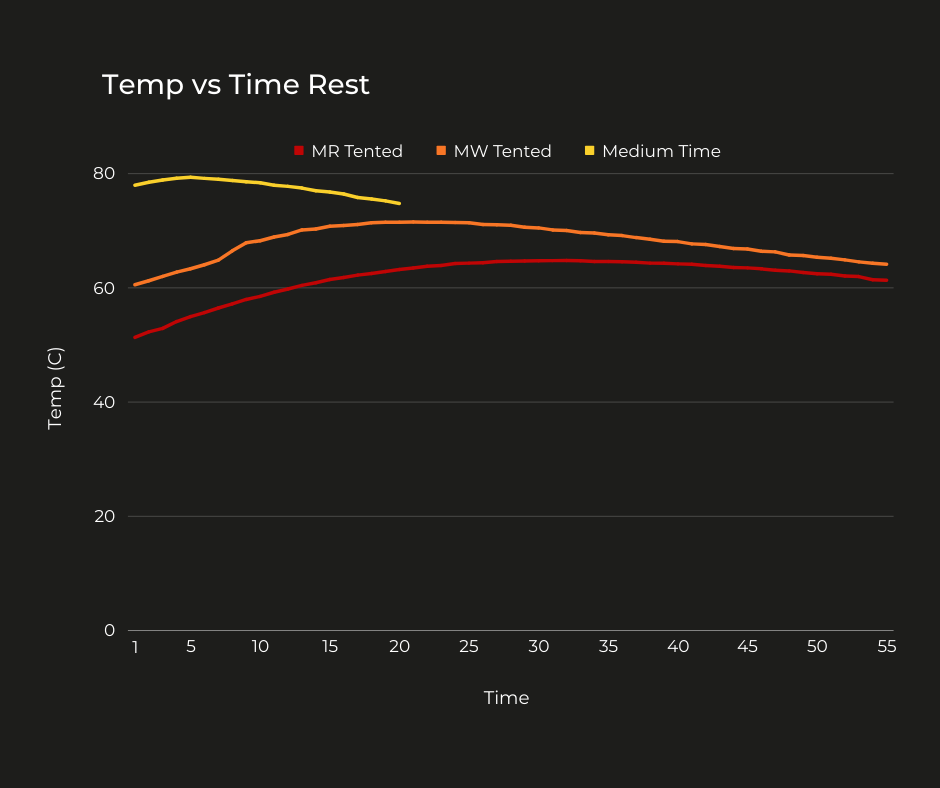
Our Verdict
Cooked temperature
Coupling the results from the main experiment with our additional time-based test, we can see that cooking to a higher temperature does result in less carryover cooking. However, within the realm of medium rare to medium well lambs, it isn’t a huge difference. It seems to be once the lamb reaches a significantly higher temperature that carryover cooking reduces to very little.
Meat size and resting method
The results from our experiment also show that size and tenting with foil doesn’t have much impact on how much lamb legs carryover cook. So, whatever size your joint is, and however you rest it, you can expect it to rise by a similar amount. However, if cooking a smaller joint of lamb it won’t need to rest for as long because the temperature will drop more quickly.
Average temperature increase
What really surprised us about the data was how much each lamb carryover cooked. On average, the four original lambs rose in temperature by 13 °C during the rest. The temperatures for rare, medium and well-done lamb are 52 °C, 60 °C and 71 °C.
This means that if cooks don’t account for carryover cooking and remove their meat from the oven early, their lamb will end up over one whole doneness more than they’re aiming for.
Resting time
In addition, most online guides suggest resting lamb legs for around 15-20 minutes. But our results show that this isn’t anywhere near long enough. The benefit of resting meat is that as it cools, the juices thicken to produce the tender and juicy result everyone enjoys. Our data shows that lamb doesn’t even finish cooking, let alone begin to cool, after an average of 25 minutes. Based on our data, if resting a whole leg of lamb tented in foil, we’d recommend waiting around an hour before carving
The takeaway
Internal temperatures are the best guideline when it comes to getting the optimal results from your meat, and this doesn’t stop at cooking temperatures. Make sure to factor carryover cooking into your recipe. To ensure meat isn’t carved too quickly and precious juices are conserved, check the temperature of your meat before you carve it. Let it reach its peak and begin to drop in temperature, and the results will be a world apart.
Medium-well lamb cooked and rested to temperature.
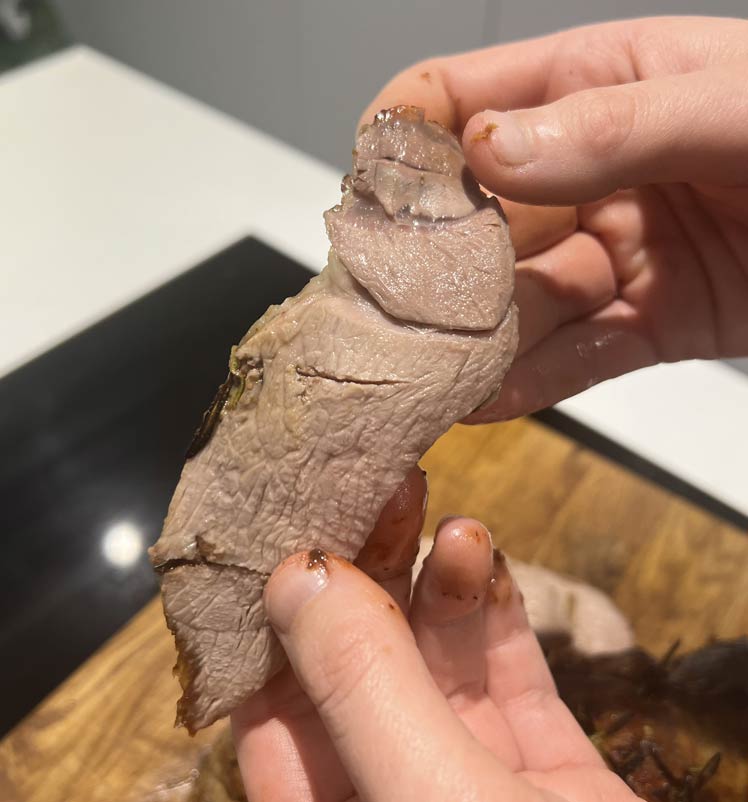
Medium lamb cooked and
rested to time.
